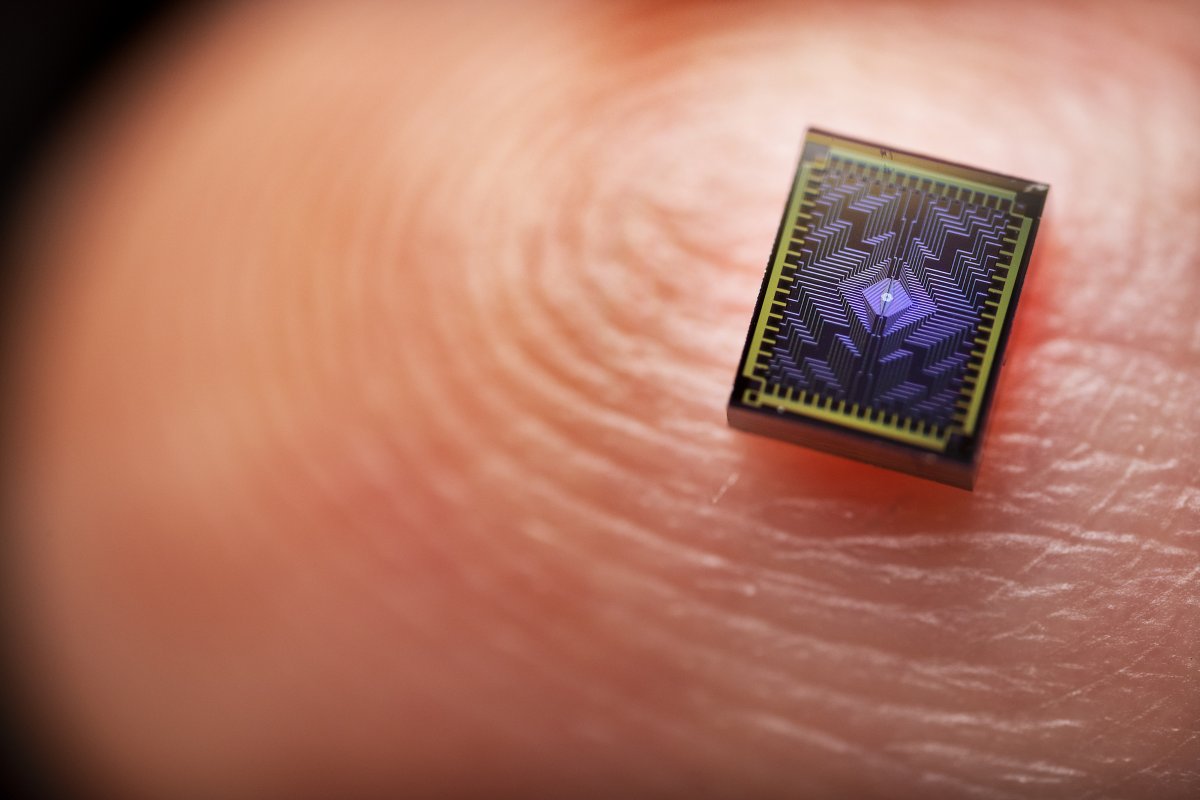With the quantum processor called Tunnel Falls, which Intel recently presented, the chip manufacturer relies on exciting quantum hardware – which, however, is still in a very early phase. The fact that Intel hasn’t published any figures on the performance of its chips leaves a lot of room for speculation.
Silicon-based qubits use quantum dots. Classically, such quantum dots are tiny islands of semiconductor material embedded in a second semiconductor. These tiny droplets form a kind of artificial atom – electrons trapped in them can only occupy the energy levels defined by the size and material of the semiconductor island. In this way, for example, optical emitters with adjustable wavelengths (e.g. for displays) can be produced.
Quantum dots from Intel
In the Intel quantum processor, tiny FET transistors form the quantum dots in which individual electrons are trapped by a corresponding potential on the electrodes. The Intel developers use the spin of the electrons for the quantum calculations.
Guido Burkhard from the University of Konstanz, who researches in this area, explains the advantages and disadvantages of this approach in a video: Since the spin – something like the quantum mechanical angular momentum of the electron – does not react directly to electric fields, such qubits are comparatively stable . The “gate fidelity”, i.e. the quality with which quantum operations can be carried out, is over 99 percent, the lifespan of the qubits is up to 250 microseconds – much longer in special materials. (This is at least competitive, if not better, than with superconducting qubits out of the box.)
However, for the same reason (spins are insensitive to electric fields), it is difficult to manipulate individual qubits. The fact that the idea basically works was demonstrated experimentally for the first time in 2018 by David Zajac from IBM. Although this work attracted a lot of attention back then, it only covers the simplest case: a CNOT gate acting on two qubits simultaneously. Manipulating the spin of a single electron is much more difficult, since the spin only responds to magnetic fields.
However, they can only be produced with a great deal of effort in such a way that only one qubit is really manipulated locally. Various indirect methods have been developed to manipulate spin qubits with electric fields. Which processes are used in the Intel processor – and what kind of performance it then has – will be exciting.
News from IBM
Meanwhile, IBM has for the first time demonstrated so-called quantum superiority on a practically relevant problem with its 127-qubit quantum processor. The “benchmark” experiment suggests, according to IBM, that quantum computers could have “useful applications in the real world within two years”.
Four years ago, Google announced for the first time that the quantum computer they had built could outperform classic machines. However, this was a rather artificial problem. The Google researchers calculated a sequence of 14 quantum operations on 53 qubits, repeated this sequence a million times and obtained a specific statistical distribution of the results. According to their calculations, a classic supercomputer that simulates this would have needed 10,000 years – an estimate that IBM researchers later vigorously contradicted.
In a paper published in Nature on June 14, the researchers show how they were able to calculate the magnetization of a magnetic model system on the Eagle processor with 127 superconducting qubits that will be presented in 2021. Although the model for the magnetic material is highly simplified, “it inspires optimism that this will also work for other systems and more complicated algorithms,” comments John Martinis of the University of California, Santa Barbara, who led the Google team to their 2019 milestone has led.
Because the researchers had developed a new technique to at least minimize errors caused by quantum noise. To do this, Abhinav Kandala and his team made precise measurements of the noise in each of their qubits – and found that the noise followed relatively predictable patterns. With this knowledge, the researchers were able to calculate back what their measurements – in this case the complete magnetization state of a two-dimensional solid – would look like without noise. They were then able to perform calculations using all of Eagle’s 127 qubits and up to 60 processing steps. That is more than any other known quantum computer experiment – and above all more than can be simulated with the most powerful classical computer.
In an initial hype phase after the Google success of 2019, numerous companies and researchers assumed that useful calculations could also be carried out with heavily error-prone and relatively small first-generation quantum processors. Apart from a few isolated cases, however, these hopes proved to be premature. Researchers now largely agree that methods for quantum error correction need to be developed. However, this requires a large number of physical qubits to be combined into “logical qubits”.
However, the noise suppression method now shown could also enable further calculations without quantum error correction, which are impossible even on the largest classical supercomputers. According to its roadmap, IBM also wants to present its Condor quantum chip with 1,121 qubits this year. In an accompanying comment on the paper, however, Nature is rather skeptical: Even with the new approach, no relevant industrial applications on quantum computers are expected in the near future – but it would most likely further accelerate the “development of fault-tolerant quantum computers”.
(bsc)
To home page
